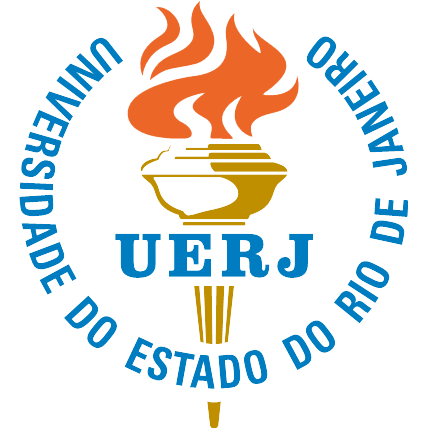Perda hemática e sinais ou sintomas durante avaliação puerperal: implicações para a assistência de enfermagem [Blood loss and signs or symptoms during puerperal assessment: implications for nursing care]
DOI:
https://doi.org/10.12957/reuerj.2017.22756Keywords:
Hemorragia pós-parto, período pós-parto, cuidados de enfermagem, sinais e sintomasAbstract
Objetivo: relacionar perda hemática com queixas, sinais ou sintomas de alterações sanguíneas no puerpério, por meio da mensuração do nível de hemoglobina (Hb) e hematócrito (Ht). Método: estudo epidemiológico, seccional, realizado com 100 primíparas em um hospital paulista de ensino, entre agosto e dezembro/2012. Analisadas informações do cartão pré-natal/prontuário e dosado Hb e Ht, na admissão da parturiente e 48 horas pós-parto. Aprovado pelo Comitê de Ética em Pesquisa da Universidade de São Paulo (HCRP nº 4172/2011). Resultados: mulheres com maiores perdas sanguíneas apresentaram diferença estatística para descoramento de mucosas e queixas sintomáticas - fraqueza, cansaço, desânimo e/ou apatia. Hipotensão e taquicardia não apresentaram relação com queda do hematócrito. Conclusão: assistência de enfermagem de qualidade pode contribuir para a redução da morbimortalidade materna, nos quadros de hemorragia pós-parto, a partir da identificação precoce e valorização de queixas e sinais/sintomas das puérperas e devidas intervenções.
ABSTRACT
Objective: to relate blood loss with complaints, signs or symptoms of blood disorders in the postpartum period, by measuring hemoglobin (Hb) and hematocrit (Ht) levels. Method: epidemiological cross-sectional study of 100 primiparas at a São Paulo teaching hospital, from August to December, 2012. Information from antenatal and hospital records were analyzed and Hb and Ht dosed, at mother’s admission and 48 hours postpartum. The study was approved by São Paulo University research ethics committee (HCRP No. 4172/2011) Results: women with greater blood loss showed statistical differences in mucous membrane pallor and symptomatic complaints (weakness, fatigue, depression and/or apathy). Hypotension and tachycardia showed no association with decreased hematocrit. Conclusion: quality nursing care can contribute to reducing maternal morbidity and mortality in cases of postpartum hemorrhage, by early identification of, and consideration for, postpartum women’s complaints and signs/symptoms, and appropriate interventions.
RESUMEN
Objetivo: relacionar pérdida hemática con quejas, signos o síntomas de alteraciones de sangre en período post-parto, mediante medición del nivel de hemoglobina (Hb) y hematocrito (Ht). Método: estudio epidemiológico seccional realizado junto a 100 primíparas en un hospital universitario de Sao Paulo, entre agosto y diciembre / 2012. Fueron analizadas informaciones de registros prenatales y dosificados Hb y Ht en la admisión de la madre y 48 horas después del parto. El estudio fue aprobado por el Comité de Ética en investigación de Universidad de São Paulo (HCRP N. 4172/2011). Resultados: mujeres con mayor pérdida de sangre mostraron diferencia estadística para blanqueo de mucosas y quejas sintomáticas: debilidad, fatiga, desánimo y/o apatía. Hipotensión y taquicardia no tuvieron relación con la disminución del hematocrito. Conclusión: cuidados de enfermería de calidad pueden contribuir a la reducción de morbimortalidad materna, en casos de hemorragia postparto, por medio de identificación temprana y valorización de quejas y signos/síntomas de mujeres puérperas y procediendo a las debidas intervenciones.
DOI: http://dx.doi.org/10.12957/reuerj.2017.22756
Published
How to Cite
Issue
Section
License
When publishing in Revista Enfermagem UERJ, the authors declare that the work is their exclusive authorship and therefore assume full responsibility for its content.
Authors retain copyright to their article and agree to license their work using a Creative Commons Attribution International Public License (CC BY), thereby accepting the terms and conditions of this license (https://creativecommons.org/licenses/by/4.0/legalcode.en), which allows material created by the author to be distributed, copied and displayed by third parties. The original work must be cited and present a link to the article available on the website of the journal in which it was published.
The Copyright of the articles published in Revista Enfermagem UERJ belongs to their respective author(s), with the rights of first publication assigned to Revista Enfermagem UERJ, with the work simultaneously licensed under a Creative Commons License CC BY, which allows sharing of work with recognition of authorship and initial publication in this journal.
The authors grant Revista Enfermagem UERJ the right of first publication, to identify themselves as the original publisher of the work and grant the magazine a license of non-exclusive rights to use the work in the following ways:
- Sell and/or distribute the work in printed copies and/or electronic format;
- Distribute parts and/or the work as a whole with the aim of promoting the magazine through the internet and other digital and printed media;
- Record and playback work in any format, including digital media.
In line with the journal's policies, each published article will be assigned a Creative Commons Attribution (CC BY) license.









